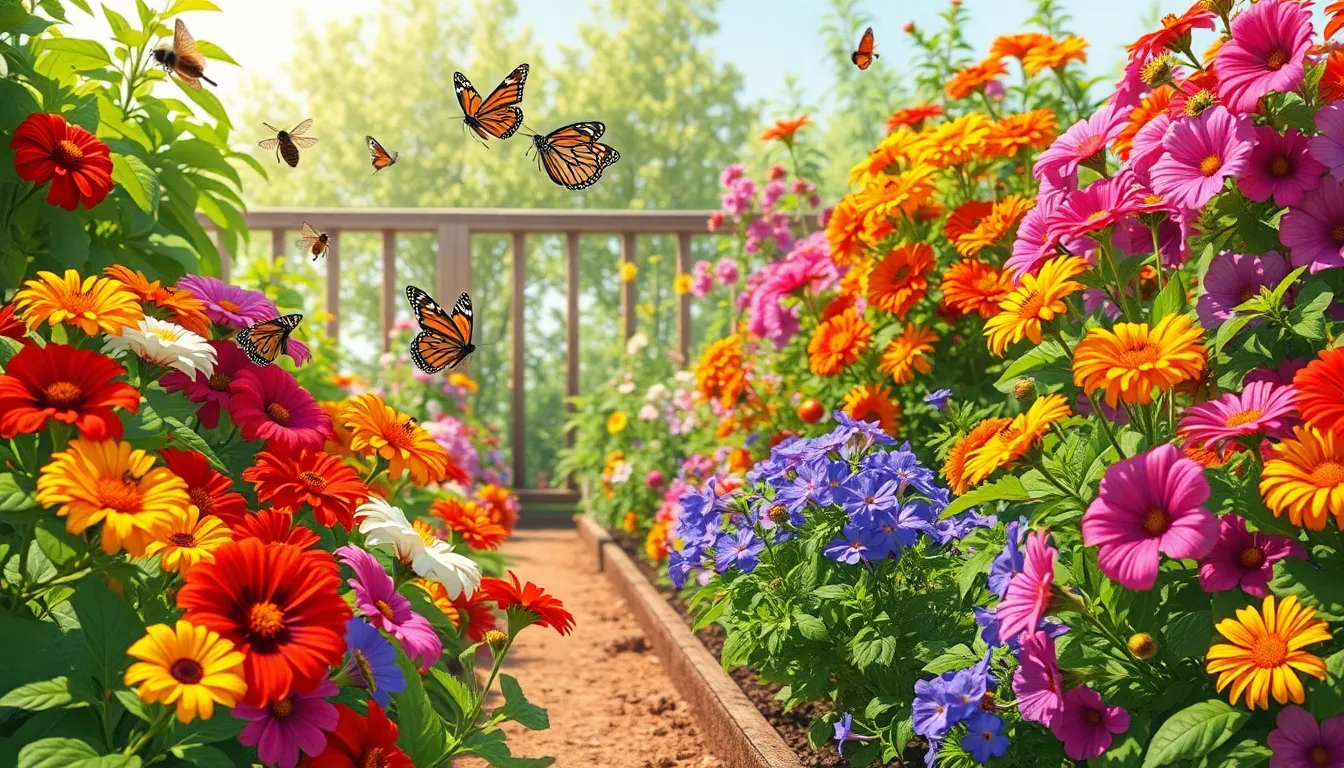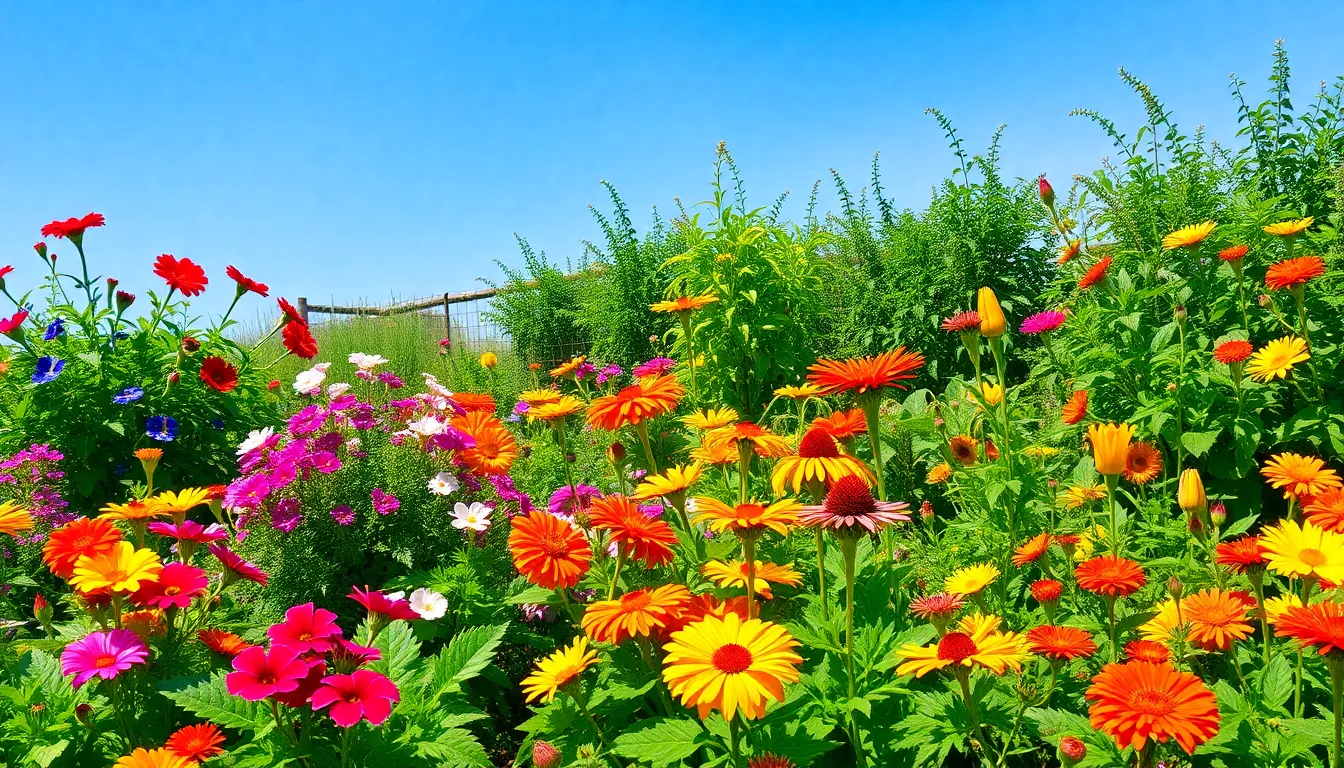The Best Fluffy Pancakes recipe you will fall in love with. Full of tips and tricks to help you make the best pancakes.

Summer Garden Plants: Create a Vibrant Oasis That Attracts Bees and Butterflies
As the sun shines brighter and temperatures rise, summer beckons gardeners to unleash their creativity. This season isn’t just about soaking up the sun; it’s the perfect time to transform any outdoor space into a vibrant oasis. With the right summer garden plants, one can create a lush paradise that even the bees will envy.
Summer Garden Plants
Summer garden plants offer several advantages that enhance any outdoor space. These plants not only contribute to a lively atmosphere but also boost biodiversity.
Attracting Pollinators
Pollinators thrive in gardens filled with summer plants like sunflowers and lavender. Many flowering varieties release nectar that draws bees, butterflies, and hummingbirds. Selecting native plants increases the chances of attracting local pollinator species. The presence of these creatures aids in the pollination of both garden plants and surrounding crops. Creating habitats for pollinators contributes to a balanced ecosystem, fostering health and sustainability.
Enhancing Your Outdoor Space
Vibrant flowers and lush foliage transform any yard into an inviting oasis. Summer plants such as marigolds and zinnias add color and texture to gardens. They provide shade and a more comfortable environment for outdoor activities. Utilizing vertical gardening techniques with climbing plants can expand usable space and prevent overcrowding. Seasonal variations keep the scenery dynamic, ensuring a fresh and engaging atmosphere throughout the summer months. Incorporating diverse plant species enhances visual appeal and encourages relaxation and enjoyment.
Popular Types of Summer Garden Plants

Summer gardens thrive with a variety of plants that enhance beauty and support local ecosystems. Selecting the right species boosts both aesthetic appeal and ecological health.
Annuals
Annuals provide vibrant blooms throughout the summer months. Varieties like petunias, marigolds, and zinnias add splashes of color to any garden. Gardeners appreciate their ability to bloom all summer long, making them ideal for seasonal displays. These plants typically require replanting each year, yet their extensive flowering windows make them popular choices.
Perennials
Perennials bring life to gardens year after year. Plants like daylilies, coneflowers, and hostas flourish in summer heat, adding texture and depth. Unlike annuals, they return each season, making them cost-effective in the long run. They support pollinators, enhancing biodiversity and creating beautiful habitats.
Vegetables
Vegetable gardens thrive in summer temperatures. Crops like tomatoes, cucumbers, and peppers flourish in sunny spots, producing abundant yields. These plants require regular watering and care but reward gardeners with fresh produce. Harvesting encourages healthy eating while enjoying the fruits of gardening efforts directly from home.
Herbs
Herbs offer aromatic additions to summer gardens. Basil, rosemary, and cilantro thrive, providing culinary benefits along with beauty. Growing these plants encourages garden-to-table dining and enhances flavors in home-cooked meals. Regular harvesting promotes new growth, ensuring a steady supply throughout the season.
Tips for Growing Summer Garden Plants
Growing summer garden plants requires careful attention to several key factors, including soil preparation, watering techniques, and pest management.
Soil Preparation
Soil preparation forms the foundation of a thriving summer garden. Testing soil pH helps determine necessary amendments, ensuring optimal plant growth. Adding organic matter like compost improves soil structure, enhancing drainage and nutrient retention. Incorporating a balanced fertilizer supports healthy root development, promoting vigorous plant growth. Tilling the soil loosens compacted areas, allowing roots to access essential nutrients. Ensuring proper soil temperature contributes to seed germination and plant establishment. Regularly checking moisture levels prevents overwatering or drought stress during the summer months.
Watering Techniques
Watering techniques significantly impact plant health during summer. Deep watering encourages robust root systems, enabling plants to withstand heat. Early morning is the best time for watering, as it reduces evaporation and fungal diseases. Utilizing drip irrigation systems provides efficient water delivery directly to the roots. Mulching around plants conserves soil moisture and suppresses weed growth. Monitoring weather conditions can guide watering schedules, reducing unnecessary water usage. Observing plants for signs of stress, such as wilting or browning leaves, indicates watering needs.
Pest Management
Effective pest management safeguards summer garden plants from damage. Regularly inspecting plants helps identify pests early, enabling swift action. Utilizing natural predators, like ladybugs and lacewings, supports a balanced ecosystem while controlling pests. Applying insecticidal soap or neem oil provides a less toxic alternative for pest removal. Keeping garden areas clean minimizes hiding spots for pests, deterring infestations. Rotating crops each year reduces pest populations by breaking their life cycles. Educating oneself about common pests and beneficial insects creates a healthier, more resilient garden environment.
Conclusion
Embracing summer garden plants can truly transform outdoor spaces into vibrant sanctuaries. By selecting the right combination of annuals perennials vegetables and herbs gardeners can create a lively atmosphere that not only pleases the eye but also supports local wildlife. Incorporating native species enhances biodiversity while techniques like vertical gardening maximize space and keep the garden dynamic.
With the right care and attention to soil health watering practices and pest management summer gardens can flourish. This season offers endless opportunities for creativity and enjoyment encouraging individuals to connect with nature and savor the beauty of their surroundings. A well-planned summer garden is more than just a visual delight; it’s a thriving ecosystem that brings joy and relaxation to all who visit.
